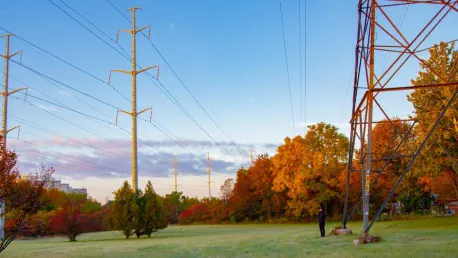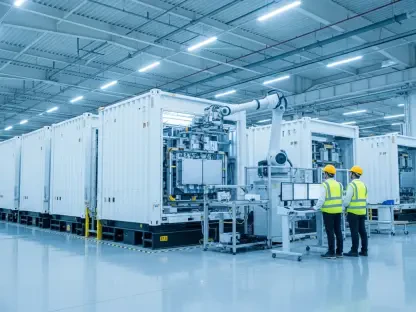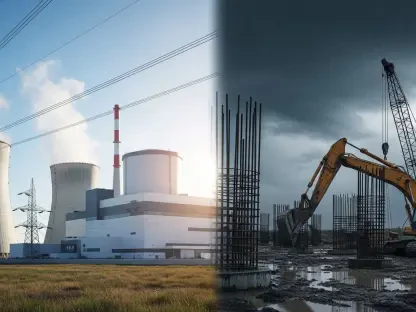The evolution of grid-connected energy storage solutions is dramatically reshaping the power landscape. This article explores the advancements in technology, integration into current energy systems, market dynamics, and the overarching impact on energy consumption trends. The evolution of renewable energy technologies, specifically solar and wind power, combined with advancements in battery storage technology, has revolutionized the energy sector. Photovoltaic cells and n-type solar cells have significantly improved in efficiency and affordability, making solar accessible to a broad audience. Similarly, wind energy has become more efficient both on land and at sea, providing renewable energy options for homeowners, businesses, and industries.
Technological Advancements in Renewable Energy
Solar Power Innovations
Photovoltaic cells have seen substantial improvements in efficiency and cost reduction. The development of n-type solar cells has further enhanced the performance of solar panels, making them more accessible to a wider audience. These advancements have made solar energy a viable option for many, contributing significantly to the growth of renewable energy adoption. In recent years, the efficiency rates of these cells have risen, ensuring that more sunlight can be converted into usable energy. Consequently, more households and enterprises are turning to solar power to meet their energy needs, contributing to a greener environment.
The increase in the affordability of solar panels has also played a crucial role in their wider adoption. This shift has led to a rise in the number of installations, further driving down costs through economies of scale. As new players enter the market and technology continues to evolve, the cost of setting up solar panels has decreased considerably. This development has made it possible for a larger segment of the population to take advantage of solar energy, which in turn boosts its presence in the global energy mix, reducing reliance on fossil fuels and enhancing environmental sustainability.
Wind Energy Efficiency
Wind energy has also seen remarkable advancements, both on land and at sea. Modern wind turbines are more efficient and capable of generating more power with less wind. This increased efficiency has made wind energy a more attractive option for large-scale energy production, significantly contributing to the overall growth of renewable energy. With advancements in turbine technology, wind farms are now able to produce more consistent and reliable energy, even in areas that were previously considered unsuitable for wind energy production.
Offshore wind farms have become a significant part of the renewable energy landscape. These installations take advantage of stronger and more consistent winds at sea, providing a reliable source of power. The development of floating wind turbines has further expanded the potential for offshore wind energy, allowing for installations in deeper waters. As these technologies advance, they become more cost-effective and efficient, paving the way for wind energy to become an even more integral part of the global energy portfolio.
Battery Storage Technology
Lithium-Ion Battery Advancements
Battery storage technology has advanced impressively, particularly with lithium-ion batteries. These batteries now feature longer lifespans and enhanced safety, making them a reliable option for energy storage. The reduction in the Levelized Cost of Storage (LCOS) has also made lithium-ion batteries more affordable, facilitating their integration into existing power grids. With these improvements, batteries can store excess energy generated during peak production times and release it when demand is higher, ensuring a stable and reliable power supply.
The enhancements in battery technology have enabled the seamless integration of renewable energy sources into the grid. By storing excess energy generated during times of high production, such as sunny or windy days, these batteries help balance supply and demand. This capability is crucial for maintaining grid stability, especially as the proportion of renewable energy in the energy mix continues to increase. With advancements in battery storage technology, the path towards a clean and sustainable energy future becomes clearer and more achievable.
Alternative Battery Technologies
In addition to lithium-ion batteries, other battery technologies are being developed and deployed at the utility level. Flow batteries and sodium-sulfur batteries are examples of large-capacity, long-duration storage systems that are crucial for balancing load and managing energy demands during peak hours. These alternative technologies offer unique benefits, such as longer lifespans and the ability to store substantial amounts of energy. They play a vital role in addressing the intermittency of renewable energy sources, making the overall system more resilient and reliable.
Flow batteries, for example, are particularly advantageous in large-scale applications due to their scalability and long life cycles. Sodium-sulfur batteries, on the other hand, offer high energy density and excellent thermal stability, making them suitable for grid-scale storage. As the market for grid-scale batteries continues to grow, these technologies will become increasingly important in the transition to a clean energy future. The continued innovation and deployment of various battery technologies ensure that energy storage solutions can meet the diverse needs of modern power grids.
Smart Grid Integration
Data-Driven Energy Management
Smart grid integration has become an essential aspect of modern energy management. Smart grids use data-driven insights, real-time data analytics, and machine learning to optimize energy consumption and storage. This approach enhances grid reliability and sustainability, allowing for better management of renewable energy sources. By continuously monitoring and analyzing data from various points in the grid, smart grids can predict energy demand accurately and ensure that energy is distributed efficiently.
Pairing smart grids with advanced storage solutions further improves the management of renewable energy. By integrating these technologies, the grid can quickly respond to changes in energy supply and demand, maintaining stability even with the fluctuating nature of renewable energy sources. This integration is critical for ensuring a stable and reliable power supply as the share of renewable energy in the grid continues to grow. As the technology behind smart grids continues to evolve, its impact on enhancing grid resilience and efficiency will only increase.
Enhancing Grid Reliability
The use of smart grids and advanced storage solutions helps maintain grid stability by balancing supply and demand. This is particularly important as the share of renewable energy in the grid increases, given the intermittent and unpredictable nature of these energy sources. By using real-time data and predictive algorithms, smart grids can anticipate demand spikes and drops, adjusting energy distribution accordingly to prevent outages and imbalances.
Furthermore, smart grids enable more efficient use of energy resources, reducing waste and improving overall system efficiency. They facilitate the integration of various renewable energy sources, ensuring that the grid can handle the variable outputs of solar, wind, and other renewables. This contributes to a more sustainable and reliable energy infrastructure, supporting the transition to a clean energy future. The continued development and implementation of smart grid technologies are crucial for building a resilient, efficient, and sustainable energy system.
Residential Grid-Connected Storage Systems
Benefits for Homeowners
Residential grid-connected storage systems offer substantial benefits for homeowners. These systems allow the storage of solar energy generated during peak sunlight hours for use during periods of low solar output. Key advantages include energy independence, reduced electricity bills, protection against power outages, and contributions to a resilient energy future. As more homeowners invest in these systems, they not only benefit individually but also contribute to the overall stability and sustainability of the energy grid.
Homeowners in states like California and New York are already experiencing these benefits. By investing in residential storage systems, they can reduce their reliance on the grid and take control of their energy consumption. This independence from the grid is not only financially beneficial but also provides a sense of security and reliability, especially in areas prone to power outages. The growing adoption of residential energy storage systems is a testament to their efficacy and the positive impact they can have on both individuals and the broader community.
System Components
The evolution of grid-connected energy storage solutions is dramatically reshaping the power landscape. This article explores the advancements in technology, integration into current energy systems, market dynamics, and the overarching impact on energy consumption trends.
Renewable energy technologies, especially solar and wind power, in tandem with advancements in battery storage, have revolutionized the energy sector. Photovoltaic cells and n-type solar cells have made massive strides in efficiency and affordability, making solar power accessible to a broad array of consumers. Likewise, wind energy technology has improved significantly, both onshore and offshore, offering renewable energy solutions for homeowners, businesses, and industries alike.
The integration of these advanced technologies into existing energy systems has led to more reliable and sustainable power sources. As the market adapts to these changes, the dynamics of energy consumption are shifting, promoting greater reliance on renewable sources. This transformation is not only beneficial for reducing carbon footprints but also for achieving energy independence and sustainability on a global scale.









